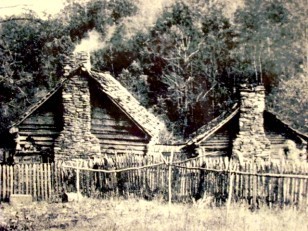GAINESVILLE - The bloody drama of the Civil War did not unfold in Northeast Georgia as it did in other parts of the south and in other parts of Georgia. In this part of the state there were pro-Union Southerners, there were mountain families concerned more with just daily survival rather than supporting the Southern war effort, and there was even a bloodless 'battle' fought between home guard troops and imaginary Yankee cavalry.
The Civil War of Margaret Mitchell's 'Gone with the Wind', was fought from Chattanooga, the state railroad, the Western and Atlantic Railroad, down to Atlanta, and then down to Savannah on Union General William T. Sherman's March to the Sea.
In Northeast Georgia's mountainous region the terrain did not lend itself well to military operations and there was no railroad until several years after the war in the 1870's.
Glen Kyle, Managing Director of the Northeast Georgia History Center at Brenau University in Gainesville, says a different kind of conflict occurred in the hills, valleys, scattered settlements and farms in this part of the state.
It was a different conflict largely because of the independence of the Scotch Irish who settled in the area, he said.
"There wasn't a unified sense of nationhood for the Confederacy like there was in other parts of the South," according to Kyle. "Here in the mountainous area there was a very individualistic life style."
That life style set the stage for incidents in which the mountain folk actually fired upon Confederate authorities seeking men to fight in their armies after the Confederacy established the first military draft in American history.
"They were focused on their churches, their community, their family and kinship, that's what their world was," Kyle said.
Kyle said even while mountain counties sent men to fight in the southern armies as volunteers, the home folk did not like Confederates coming around to collect more men or food that farm families were hard pressed to produce for themselves and slavery was not nearly as large an issue as it was elsewhere in the state.
"The geography simply did not lend itself to large plantations with cash crops and therefore with large populations of slaves," Kyle points out, although slave labor was employed in mining operations around Dahlonega.
Kyle said at Georgia's Secession Convention in 1861, Northeast Georgia delegates were opposed.
"Very few delegates from this mountainous region voted to secede, Kyle recalled. "Fannin, Gilmer, Rabun delegates did not vote for secession. Delegates from more urban areas did vote for secession, they had closer economic ties with the rest of the South."
Based on the divided sentiment, there were men who hid out, biding their time until they could travel North and join the Union Army, and Kyle said some of them who hid out from the draft were discovered and hung on direct orders from Civil War Governor Joe Brown.
"There's an example in Lumpkin County of five to six men who were caught trying to hide and avoid the draft and were executed," Kyle said.
Kyle said what happened in Northeast Georgia was a 'separate civil war', which happens to be the title of a book, 'A Separate Civil War, Communities in Conflict in the Mountain South,' by Jonathan Dean Sarris about how the conflict affected the people of the region. Kyle sites the book as an excellent resource.
As ironic and terrible as Northeast Georgia's 'war within a war' was, it was not without its humor.
Kyle says the closest thing to an actual encounter he knows of between Yanks and Rebs in the region turned out to be a prank that grew out of a rumor.
In 1864 while the Atlanta Campaign raged on the other side of the state Lumpkin County home guardsmen had assembled based on a report that Federal cavalry was approaching.
"Right on the Hall, Lumpkin County line they camped out on a creek waiting for the blue coats," Kyle said. "Two or three fellows snuck out of camp during the night, went down and crossed the creek, came back up across from the encampment and fired their guns into the air. Utter chaos resulted and the militia commander yelled, 'Save yourselves if you can' as he took off down the road to Dahlonega as fast as he could go."
It was years before the pranksters admitted firing the guns, fearing retribution, and one home guard member filed for a pension because of his 'combat' experience. There was no Yankee cavalry.
Kyle says the Civil War history in Northeast Georgia is not what people are used to.
"We tend to focus on the big turning points but when you get away from that it gets complex," he said. "There are as many different feelings and causes about fighting for or against the Confederacy as there are individuals. When you look at the details you get a lot more humanity."
(EDITOR'S NOTE: This is another in an occasional series AccessNorthGa.com will publish this year marking the 150th anniversary of the start of the Civil War. Some, such as this piece, will be generated by AccessNorthGa.com staff members, with an emphasis on - but not limited to - northeast Georgia's role in the war and the impact it had on our region. Others will be the work of the Associated Press.)
Thursday
October 17th, 2024
8:21PM










